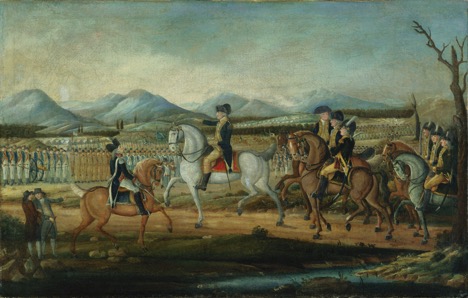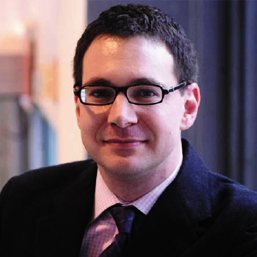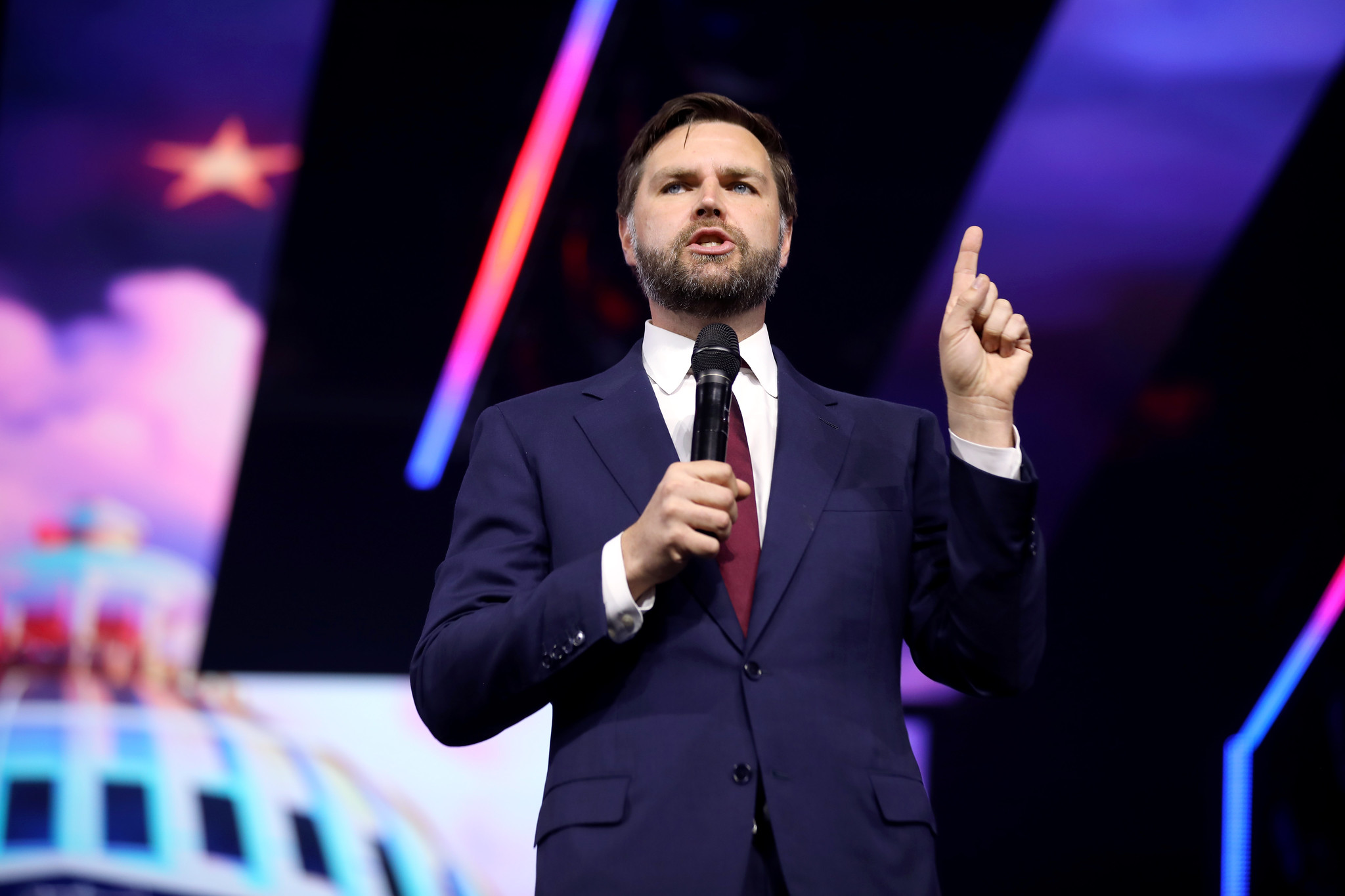Remembering the Whiskey Rebellion
On September 25, 1794, President George Washington proclaimed that that he was sending state militia forces to subdue what was dubbed the “Whiskey Rebellion.” The following week, Washington became the first and only sitting president to command forces in the field. The episode included some other important firsts—and even though few shots were ultimately fired, it highlights some significant and peculiar ways in which law controlled military power in the early republic.

Published by The Lawfare Institute
in Cooperation With

On September 25, 1794, President George Washington proclaimed that that he was sending state militia forces to subdue what was dubbed the “Whiskey Rebellion.” The following week, Washington became the first and only sitting president to command forces in the field. The episode included some other important firsts—and even though few shots were ultimately fired, it highlights some significant and peculiar ways in which law controlled military power in the early republic.
The Whiskey Rebellion started over taxes. Treasury Secretary Alexander Hamilton’s financial policy, enacted by Congress in 1791, included an excise tax on liquor distilled in the United States. This tax was strongly opposed by communities in western Pennsylvania and elsewhere along the frontier—communities that felt distant from the national government and whose economy depended heavily on liquor production. (People in these areas also consumed a lot of local product). Opponents of the tax in western Pennsylvania resorted to violence against tax collectors and those who cooperated with them.
Tensions exploded in Summer 1794, when hundreds of people attacked a federal tax inspector in Allegheny County, and ensuing violence left several people dead. Washington refused to tolerate this defiance of federal authority. He eventually sent close to 13,000 militiamen against swelling ranks of rebels—a comparably-sized force to the one Washington led in early stages of the Revolutionary War, and larger than the American forces he led at the decisive battle of Yorktown in 1781. It was the largest violent uprising in the United States, and the largest use of military force against such an uprising, until the Civil War. When the columns of troops arrived, most rebels fled or surrendered and several leaders were arrested. A couple were later convicted of treason.
The legal context is significant, because a major issue in the debates over the drafting and ratification of the Constitution had been the necessity and dangers of a national military establishment. Besides separating Congress’s powers to initiate war from the president’s powers as commander in chief, the Constitution reserved to states the right to maintain their own militias, from which Congress could draw military manpower “to execute the Laws of the Union, suppress Insurrections and repel Invasions.” The first Congresses passed a series of Militia Acts delegating to the president some power to call the state militias into federal service. (See Steve Vladeck’s Yale Law Journal Note for great detail on this legislation.)
Washington was at this time operating under the 1792 Militia Act, which, among other things, empowered him to call forth the militia to subdue domestic violence “whenever the laws of the United States shall be opposed or the execution thereof obstructed, in any state, by combinations too powerful to be suppressed by the ordinary course of judicial proceedings.” Regular, federal troops were unavailable, because the few hundred authorized by Congress were mostly occupied fighting American Indians along the Ohio frontier. Washington therefore relied on state forces from Pennsylvania, New Jersey, Maryland and Virginia, though he was generally contemptuous of the discipline and effectiveness of militias, based on his command experience in the Revolutionary War and, before that, the French and Indian War.
The political context is significant, too. Besides concerns about external threats and foreign adventurism, debates about the Constitution and military power focused on internal threats of anarchy and tyranny. “Federalists,” led by Hamilton, worried more about the former, while “Republicans,” led by Thomas Jefferson and James Madison, worried more about the latter. Hamilton thought that Republicans were helping to foment resistance to strong national government authority, including the Whiskey Rebellion, and he wanted to take advantage of the event to demonstrate national military power. Republicans suspected that Hamilton was using the Whiskey Rebellion as pretext to enlarge the national military establishment.
Although Washington leaned heavily in favor of military intervention, he moved slowly and cautiously toward his decision to send in the troops. It was two months between the height of violence against federal tax officials and his Washington’s Sept. 25 proclamation calling forth the militia to subdue the rebellion. Part of this deliberate delay was political, as Washington did not want to play into Republican fears of military tyranny. Part of it was strategic, as Washington sought to avoid action that would provoke violent escalation. And part of it had to do with checks on military action that seem peculiar today.
First, the 1792 Militia Act provision invoked by Washington contained a judicial check on his move to use military force—something that would be regarded now as a quintessentially non-justiciable political question. Specifically, to suppress “combinations” obstructing federal law who had overwhelmed the regular state law and order system, the president could call in state militias only after “an associate justice or the district judge” had certified that the conditions were satisfied. Washington went to Supreme Court Associate Justice James Wilson, a reliable Federalist. Wilson provided the required certification after a few days, but he was no rubber stamp, and the papers of various players involved in the proceedings suggest that he made evidentiary demands.
State governments also acted as a check. Pennsylvania Governor Thomas Mifflin, a Republican, was initially uncooperative, and Washington worried that without his buy-in, the Pennsylvania militia would also resist. (Besides any resulting operational challenges, this would be a big political problem for the president.) Washington delayed his offensive to try to bring Mifflin around, agreeing to send peace commissioners to try to negotiate a resolution with the rebels. Only after this effort failed miserably did Mifflin agree to cooperate.
In the end, once the federalized militia forces marched across the Allegheny Mountains to western Pennsylvania, the insurgency fizzled quickly. Cowed by the massive show of force, armed resistance melted away. The two resulting criminal convictions and death sentences of rebel leaders for treason led to another constitutional first: the next year, Washington gave the convicts the first presidential pardons.
Although not militarily significant, the expedition was consequential for national power. On the one hand, its success—resolution of the crisis without carnage and without cascading tyrannical actions—was an important step in establishing the national government’s authority, not just in theory but in practice, to use force against internal threats. On the other hand, the rebellion exposed weaknesses of a national military system that depended heavily on unreliable state militias. Some Republicans at the time viewed such federal-state military friction as a feature, not a bug—a bit like the way some observers today see bureaucratic resistance to extreme presidential decisions as a valuable stabilizer. Uneven and unreliable state militias, however, would bedevil future military endeavors deep into the next century.


.png?sfvrsn=bd249d6d_5)


